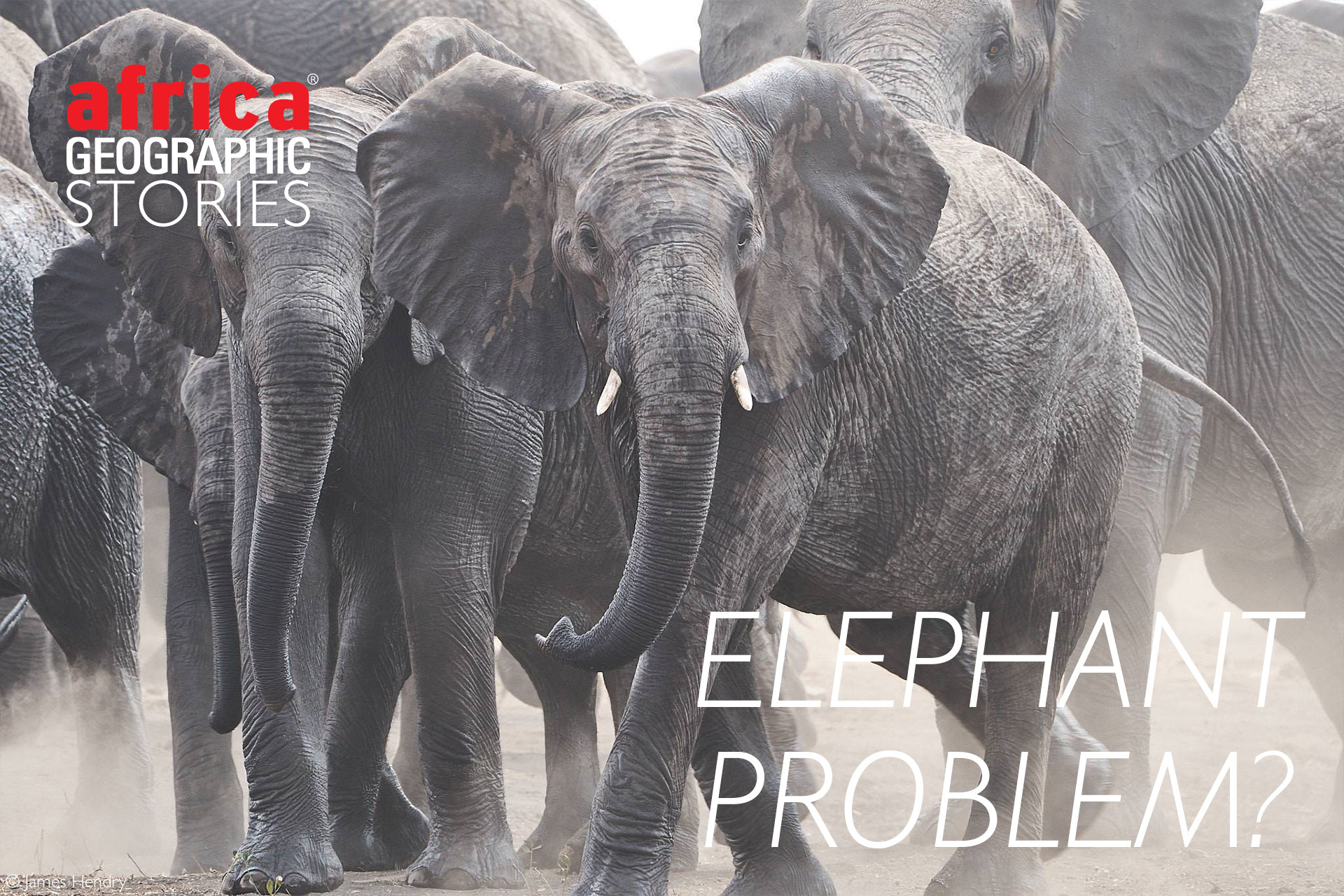
no simple answers...


At a dinner party, round a campfire or in a pub, someone raises the topic of the ‘elephant problem’ in Southern Africa…
‘When are they going to do something about the elephants in Kruger? They just everywhere. They destroying the place, you must see. The trees are down, debarking everywhere, dead baby trees, nothing for the other animals to eat. I tell you, those elephants are outta control. Somebody needs to do something about them.’
Often, the speaker has just returned from a dry season visit to the Kruger National Park, where every artificial waterhole they’ve driven past has been attended by a herd or two of elephants, and the vegetation in the vicinity has been decimated. If they’ve been out at midday, the dust, oppressive heat and mangled bushes give the impression of their beloved park on the verge of desertification.
Does our after-dinner ecologist have a point? Do we have an elephant problem in parts of Africa?
There are many strongly held views and beliefs about elephants and how they should be managed. Many of these are not based on science but on casual observation, cultural norms, stories and ‘experience’ (all of which vary widely, inevitably coloured by myriad human biases).
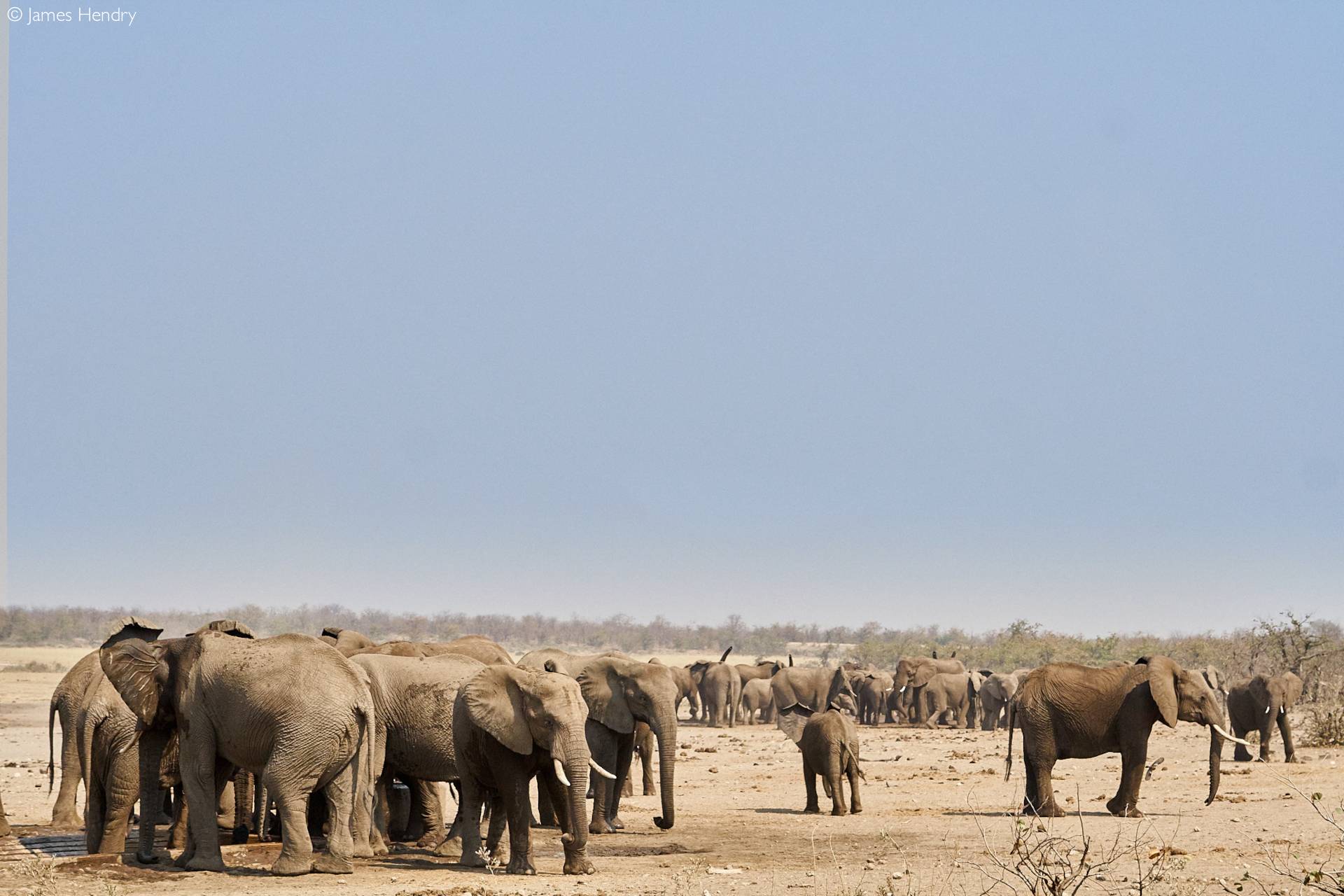
For whom is there an elephant problem, and what is it?
For our after-dinner ecologist, there are simply too many elephants. A rural farmer living with elephants might agree locally. For elephant conservationists, the elephant problem is a lack of space for our remaining elephants, which have suffered alarming population reductions on an Africa-wide basis.
As many scientists and rangers have advocated for a while now [1],[2], we need to take a holistic view of elephants and their long term effects on an entire system while considering changing landscapes, human beings living with elephants, anthropogenic changes to the land and the elephants themselves. We’ll look largely at Southern Africa in this story, but many of the principles and ideas discussed apply anywhere elephants might live.
History
Let’s take a quick squizz at the history of elephants in the Lowveld of South Africa.
When the Sabi Game Reserve (roughly the southern half of the present-day Kruger National Park) was proclaimed, there were fewer than ten elephants left in the area. Voracious ivory hunting had denuded the area of these great creatures. While many thousands were killed for their ivory, many upped sticks and left the neighbourhood for fear of falling to our insatiable desire for their teeth. This situation had been escalating for a century or more until the herds that used to roam what is now the Kruger disappeared.
Elephants are a keystone species. In other words, if you take them out of an ecosystem, then that system will change. We do not have accurate records of the vegetation of the greater Kruger area prior to the arrival of the ivory hunters. When they arrived, they didn’t take particularly accurate measurements of the vegetation structure or pay too much heed to the composition of the grass sward as they blazed away.
The indigenous people of the area kept no written records of the vegetation, and accurate oral histories of ecology from 200 years ago are almost certainly impossible to come by. We can infer something about the historical extent of woodlands in southern Africa from paleoecology[3] – such evidence indicates that woodland extension and contraction seem to have been influenced by climate. Again, it is complicated to understand the relationships between elephants and woodlands in these times, nor is it possible to understand exactly what elephant numbers were. [4]
Elephants’ historical relationship with human beings is easier to understand. People kill animals and always have. We are the most effective predator the world has ever known (just ask the swathe of extinct species whose ghosts whisper in stories and travelogues). We do not tolerate wildlife that inconveniences us or threatens to kill us and our children. Meat is also an important protein source for human beings. This means that we have preyed on elephants from time to time for food and defence. So even before the colonists arrived with their guns, elephants would have avoided areas where human beings lived.
The point of this trip back through time is to illustrate that we do not know what the vegetation looked like before the colonialists started blazing away, mad with ivory and blood lust. This is important because this lack of knowledge has not stopped us from assigning dogmatic, ideal variables to how the vegetation should look and then attempting to manage the biggest architects of the system based on supposition and unscientific dogma.
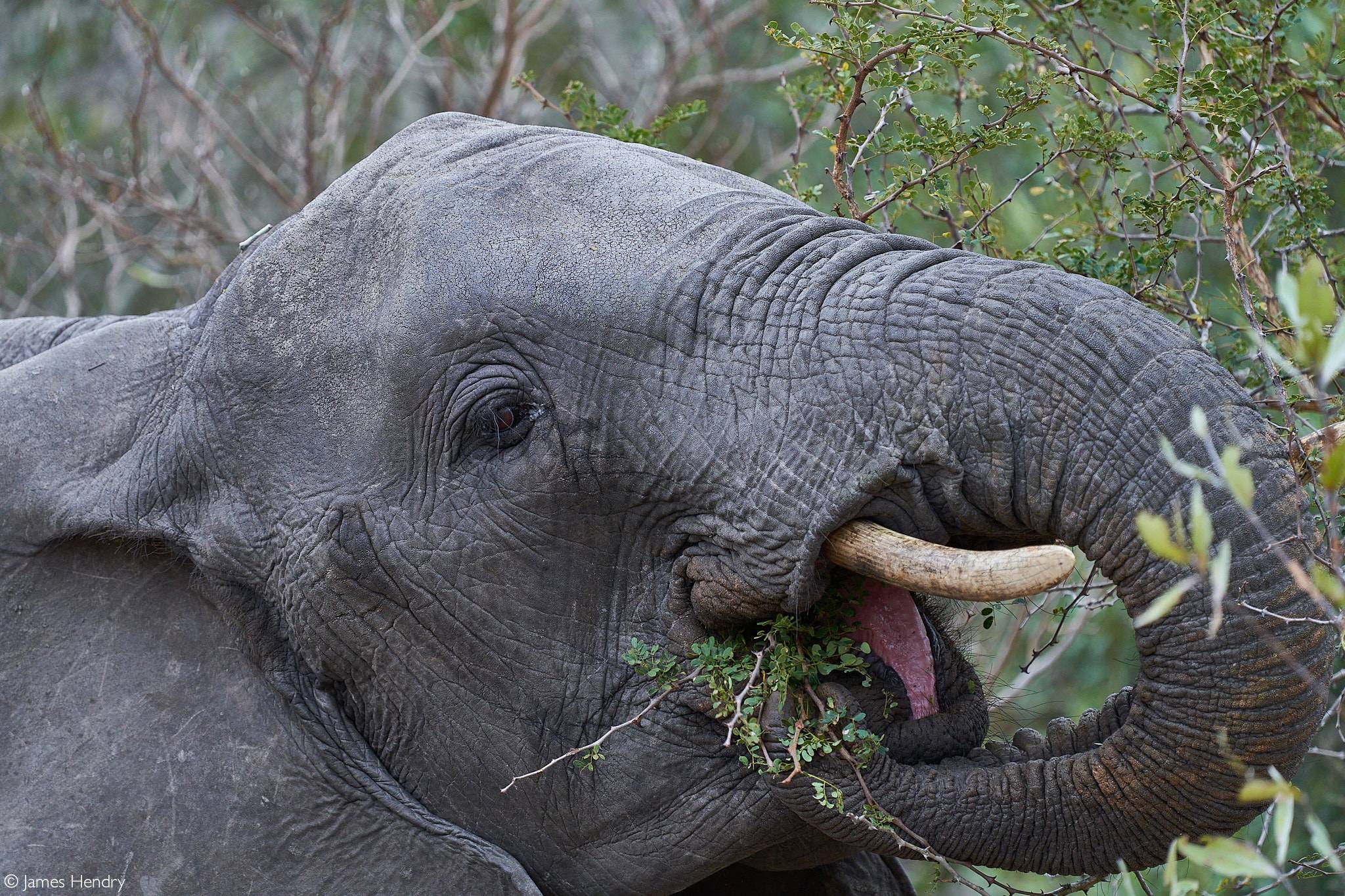

Where do elephants like to live?
Savanna elephants like to live close to water and far from people. They are most at home in savannas and will avoid thick forest and grassland devoid of trees. They need shade in the hottest parts of the day, mud for cooling down and a diverse range of plants to eat. They will graze where good grass is available and browse when herbaceous forage quality drops. When grass cover drops, elephants, especially bulls, have the greatest impact on woody plants.
Elephants are now constrained from moving through much of their potential range (they occupy just 17% of their potential range)[5] by fences and human habitation. They are no longer free to move through heterogeneous landscapes, suffering and enjoying the whims of climate-induced habitat change. Instead, elephants occupy smaller areas with insufficient space and heterogeneity of habitat for their numbers to stabilise naturally.
The Kruger National Park, although large by national standards, is long and narrow. East-West migration routes between the coastal plains of Mozambique and the Drakensberg in the west have been cut off entirely. As a result, the variety of foods and habitats available to elephants are greatly reduced. Where bulls (the most destructive feeders) would previously have spent much of their time feeding on the floodplain grasses of the coastal plain, they can no longer do that in the Kruger region. Likewise, access to such habitat has been reduced by fencing and human activity.
Elephants are lured to green croplands when times are tough, especially when cultivated fields are close to water sources. However, when the density of humanity or the land conversion attains a threshold, elephants will leave (thresholds change from place to place).
How do elephants affect vegetation?
The link between diminishing big trees and the presence of elephants is not as strong as it may seem [6].
There is no question that elephants break trees – debark, push over, stunt. But in the process, they provide habitat for other species, disperse seed, fertilise the landscape, and open up woodlands. In open systems, they seldom, if ever, destroy ecosystems irreversibly. They’re massive animals, so their effect on vegetation is obvious to the casual observer, but the effect of their absence really isn’t immediately obvious at all (yet it is no less profound[7]).
Research indicates that one to four percent of trees are destroyed by elephants each year in the protected areas of Southern Africa [2]. This level of loss may be supportable, but at the same time, it must be appreciated that this kind of utilisation will change the structure of the vegetation. It is also important to understand that elephants are not alone in their destruction of trees (from seedlings to much larger individuals – for example, there is evidence to suggest impala eat a far greater volume of tree seedlings[6]). The combined effects of other herbivores, fire, flood, drought and disease all contribute to tree survival rates.
Elephants have an especially noticeable effect on the vegetation along riverbeds. Much concern is expressed about the destruction of marula, thorn trees and baobabs in Southern Africa. (Elephants also tend to stunt mopane and combretum woodland). Little heed is given to three important factors here, however:
- There is a natural die-off of hardwood species and prolonged decay and thus an accumulation of ‘destroyed wood’.
- The rinderpest epidemic and over-hunting cut a swathe of destruction in the early 1900s, decimated wildlife populations and numbers didn’t recover for at least 50 years afterwards. Clearly, this lack of animals provided an opportunity for unusual woodland development, especially along the riverbanks. The current usage patterns and vegetation structure in these areas are likely more ‘natural’, and this is reflected in floodplains throughout Southern Africa[2].
- Historically, where people lived (often along watercourses), they would have come into conflict with elephants (through defence or predation). This would have caused elephants to avoid areas of heavy human settlement. In turn, those areas occupied by human beings would have had vegetation that exhibited far less elephant impact than those further afield.
There is one other thing to bear in mind when considering elephants and their effect on vegetation. A cycle of vegetation change in line with elephant population change in natural areas is almost certainly longer than a human life span. In other words, even dedicated scientists assessing elephants are just seeing snapshots of a much greater cycle in nature (many scientists acknowledge this) that is very difficult to understand, much less manage for.
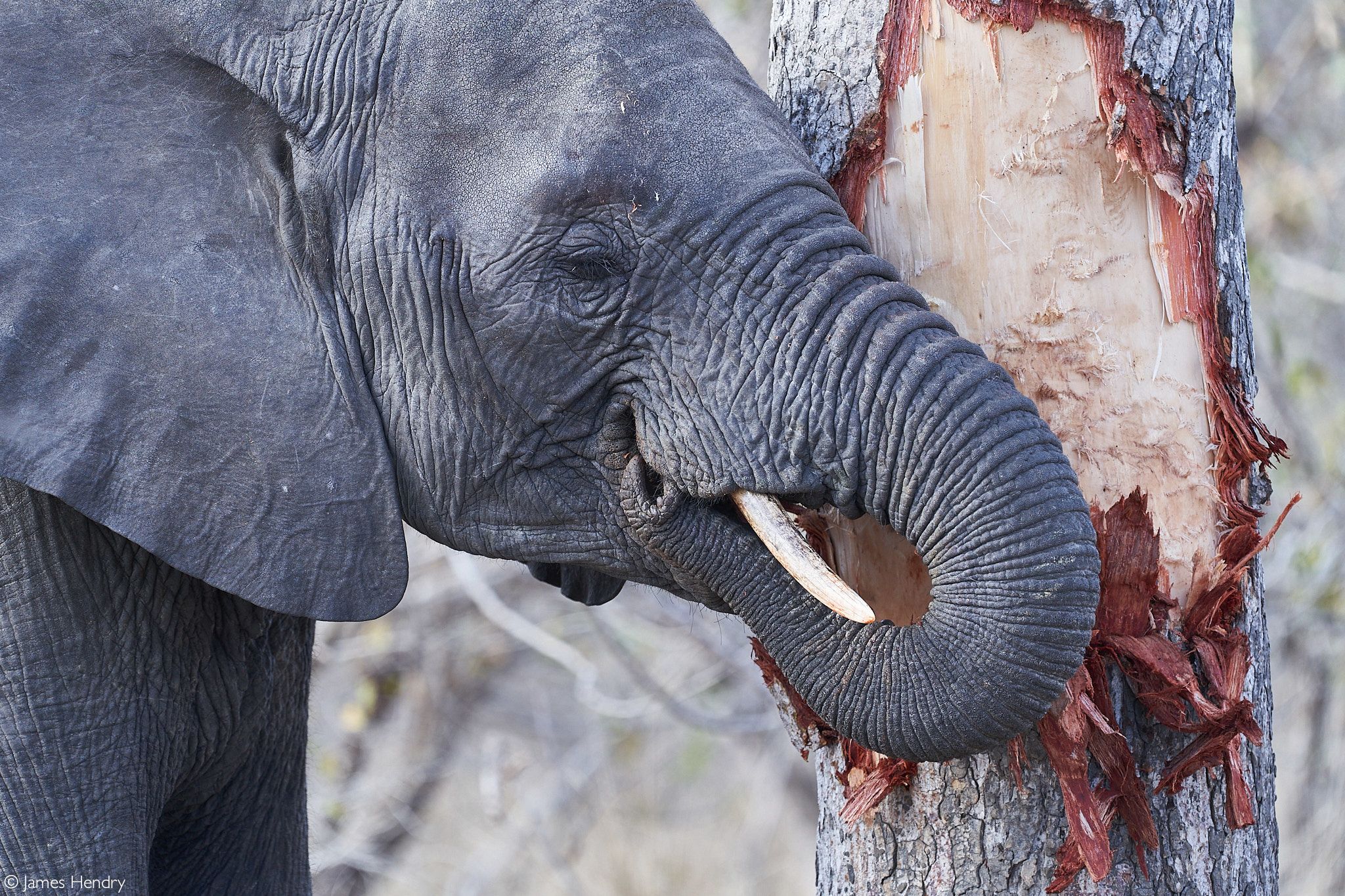
The golden carrying capacity
In 1967, when elephant culling began in earnest in the Kruger National Park, wildlife managers were focused on maintaining a ‘natural balance’ of species. During the 1960s, 70s and 80s, controlling animal numbers was the primary focus of much wildlife management. [2]
The Kruger National Park aimed to maintain the elephant population at 7000. This number was based on a supposed carrying capacity of one elephant per square mile, but it is difficult to locate the exact science behind this number. Indeed, it seems rather conspicuous by its absence [8].
More than 70 000 elephants were destroyed in the attempt to maintain the golden carrying capacity in Southern Africa (mostly in Hwange) and, in so doing, protect elephant habitat and the species they shared those habitats with. With hindsight and much better science, it seems that the culling programme was rather simplistic.
For starters, the amount of artificial water provided for animals in Southern Africa does not appear to have affected the management approach to elephants – there seemed to be ignorance (willful or otherwise) that pumping water everywhere was increasing elephant numbers through better survival rates and decreasing emigration.
While the provision of artificial water may have been done with the greater good in mind, the results were dubious at best. As Professor Rudi van Aarde says: ‘the control of elephant numbers did little to address their impact. This is not surprising considering that impact is due to factors other than numbers alone…’[2]
Alan Savory, distinguished from many experts by his ability to admit to mistakes, was responsible for slaughtering 40,000 elephants in Zimbabwe during the 1960s. After that period in his life, he decided that elephants were not the problem and that culling them did little to improve the conditions of the rangelands where he worked.[9]
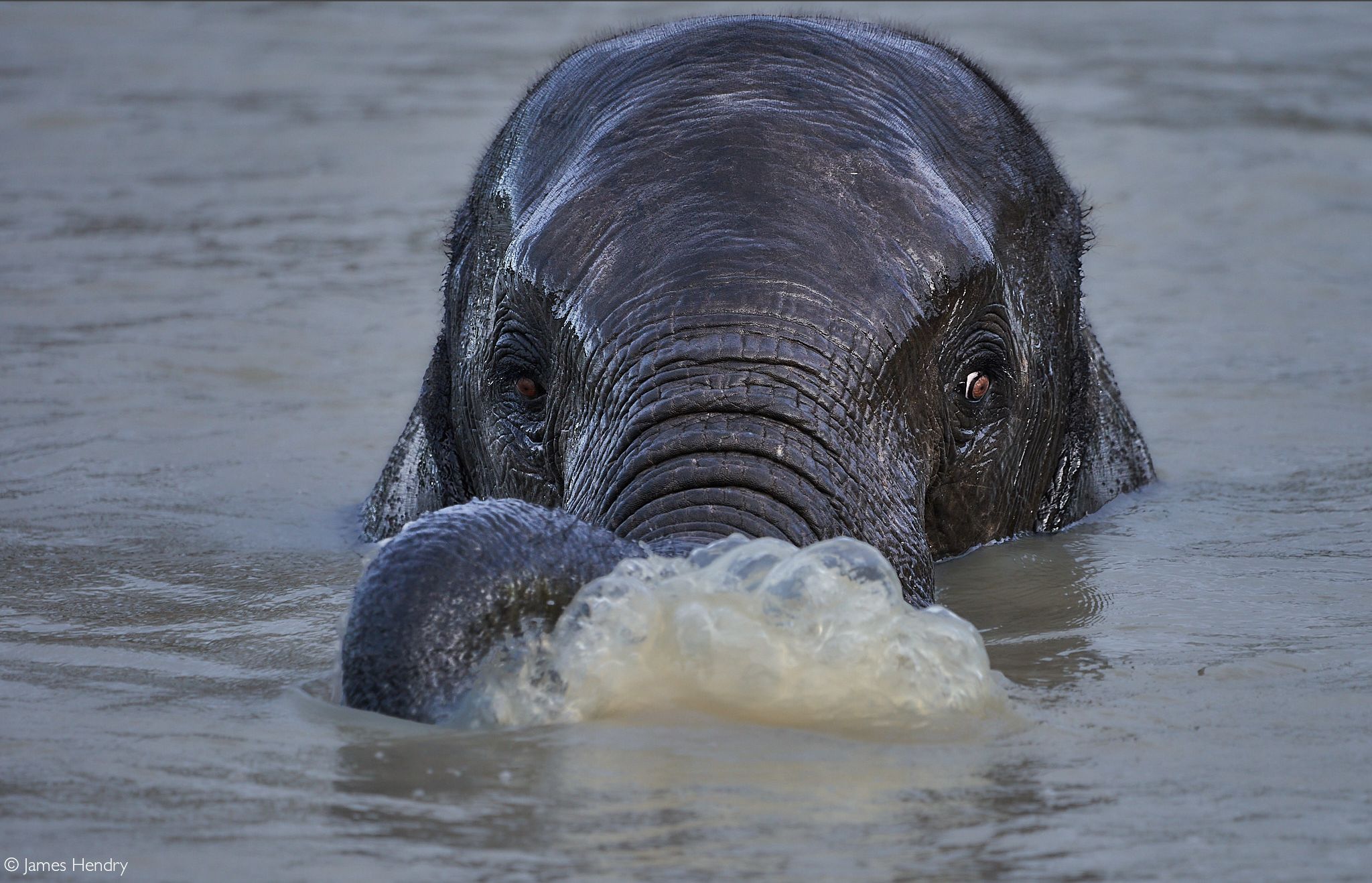
Life’s most precious resource
Elephants seldom go further than ten km (pers. comm. Bruce Clegg) from water but ideally like to be within five km of water [2]. When food in the vicinity of water depletes, then elephants will move further afield. This movement creates stress, especially in drought times and has a negative effect on calf survival. Artificial water clearly removes this effect.
In the large protected areas of Southern Africa, water is concentrated in perennial rivers and, during the wet season, in annual streams and seasonal pans. This distribution of water means that during the dry winter, elephants (and other animals) will congregate along perennial water sources and spread out during the wet summer. Clearly, movement like this will allow a heterogeneous use of the landscape by browsing and grazing herbivores.
Up until 1994, more than 300 artificial water points blossomed in the Kruger. Unsurprisingly, the elephant population increased. This was great initially because wildlife needed to be nurtured – it was recovering from more than a century of pillage. But the maintenance of the water points into the 1990s was ill-advised. Likewise, the provision of water in Hwange National Park, Etosha National Park and Chobe National Park accentuated the impact on vegetation in the vicinity of the water. It intensified die-offs during droughts (and still does in some cases).[2]
It is not only elephants that benefit from the provision of artificial water. Wildebeest, zebra and impala (particularly the latter two) are highly dependent on water and will not stray far from it. When their numbers increase in the presence of artificial water, they outcompete some species and attract predators. More mixed feeders like impala mean a greater toll on tree seedlings. In the Kruger, this meant the demise of healthy sable, roan and eland populations and also the local extinction of brown hyena [10].
If we look at the private reserves on the western boundary of the Kruger, we see a patchwork of tiny properties with landowners all managing for their (or their tourists’) needs. All the little properties have numerous dams and pumped pans. Many are the times I’ve heard landowners bemoaning the fact that the elephants are pushing down trees but not making any connection to the fact that by pumping water, they are ensuring that the elephants don’t ever have cause to leave their land. Pumping water means that the most desperate times (droughts) – when trees are most likely to be pushed over for forage – are precisely the times when elephants will concentrate on their land.
Elephants use areas close to water much more intensively than they do areas further afield. If water is equally distributed across a landscape as it is in the Sabi Sands, for example, (compared with the Kruger where there are now large swathes of land without artificial water) then the impact of elephants will be uniform. Areas that might build up a bank of forage that could be used in times of drought are used intensively all the time with the consequence that die-offs from starvation during drought are that much more intensive in areas where water is provided.

Population numbers increasing or decreasing?
In much of Southern Africa, elephants have not been intensively managed. We’ve given them water in some places and provided anti-poaching. In South Africa, we have subjected them to far more intensive management through the provision of huge amounts of water, culling, translocations and fences. Population growth in South Africa is less variable and much higher than in areas where elephants are left alone, suggesting that our well-meaning intentions stimulated population growth.[2]
You might be surprised to hear that elephant numbers in Southern Africa are actually relatively stable. In northern Botswana, the elephant population has remained stable at around 130,000 animals for more than a decade. There is some debate over this number but it is possible discrepancies come from cross-border elephant movements. This is not to dismiss any concerns about their impact, but it does suggest some sort of natural equilibrium being reached. How long this might last is not clear, and the situation should be constantly evaluated.
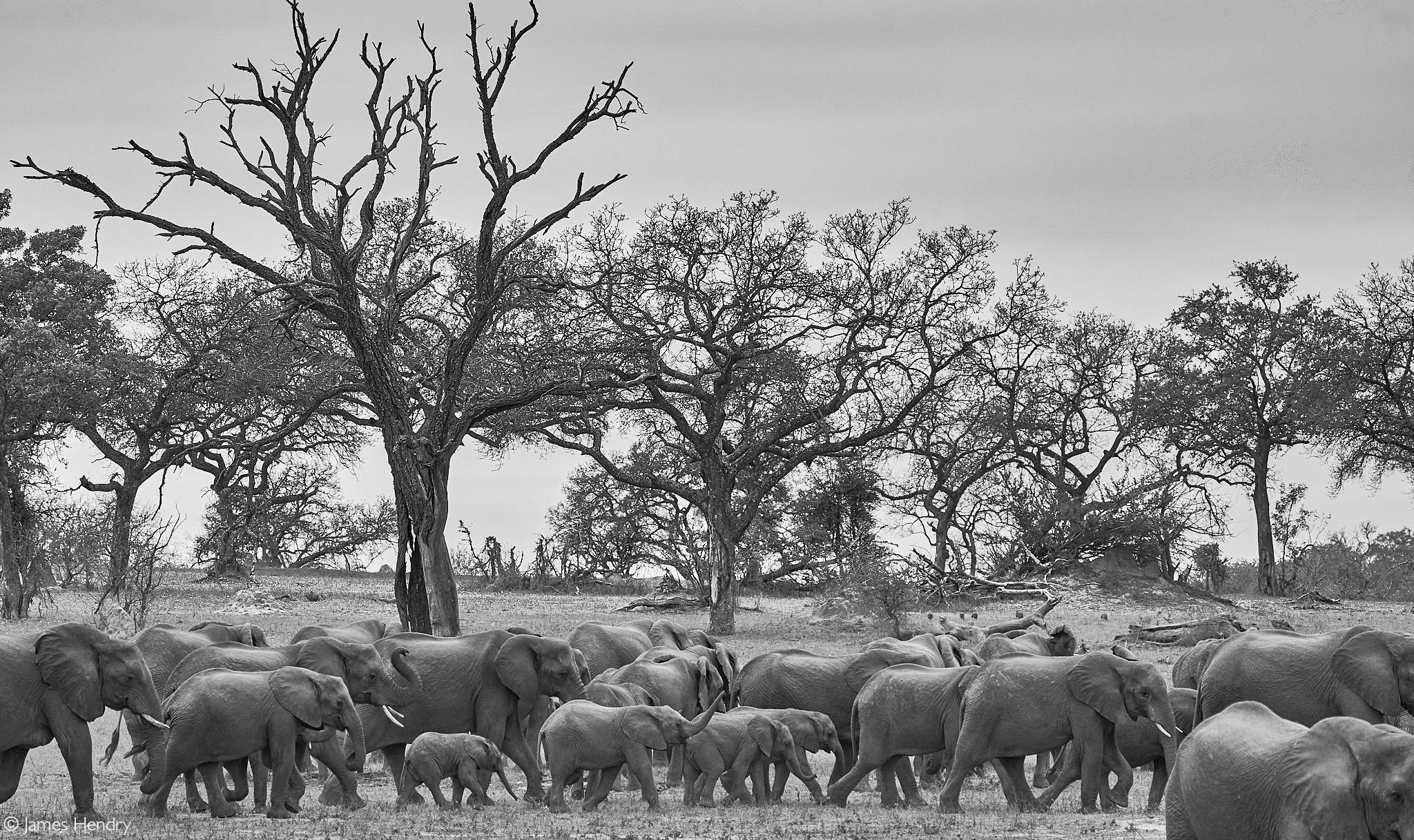
Human-elephant conflict
One of the major calls for elephant numbers to be reduced comes from people living with them – outside or near unfenced protected areas. This is understandable. Very few people, especially those who could lose all they hold dear (crops, family, livestock) in a single, aggressive elephant encounter, could tolerate the risk to life and livelihood. Sadly, the plight of rural people living with elephants has been co-opted by politicians and elements of the trophy hunting fraternity to encourage the lethal reduction of elephant numbers[11]. It is doubtful that trophy hunting, unless implemented on an industrial scale, will have any effect on human-elephant conflict – it may even cause the reverse by making elephants more terrified of human beings and therefore increase the likelihood of aggressive encounters.
As human and/or elephant populations grow outside protected areas, the chances of conflict between elephants and humans will increase. We have similar habitat needs – human settlements need to be close to water while the growing of crops in fertile soil attracts the attention of elephants, especially bulls. There are a lot of people working to mitigate the conflict between elephants and people in rural areas. However, it must be noted that while elephant populations in unfenced areas across Southern Africa are relatively stable, human populations are growing. Therefore defining the problem in terms of the number of elephants alone is incorrect.
That said, it is crucial that rural people don’t see elephants as a threat to survival. Ideally, they need to benefit from elephants (through tourism and, much as it stings to say, perhaps through protein and trophy fees – avoiding targeting large-tusked animals and removing their genes from the population). The bottom line is that the people who live with elephants have to see an advantage to their existence.
Heterogeneity – a key management objective
The key goal for most conservation organisations is to improve and maintain biodiversity. One of the ways of achieving this is to manage areas for maximum heterogeneity. In other words, management for an area like the Great Limpopo Transfrontier Park (GLTP) needs to maximise the number of different habitats. Some of these will be prime areas, some marginal, some vacant, some occupied. Densities should vary naturally across time and space in accordance with patchy resource availability. In large enough areas, this heterogeneity of landscapes would, ideally, result in subpopulations that will vary in number, growth rates etc. These would then be managed through the lens of a metapopulation.[12], [14]
One of the ways that the Kruger is currently aiming to do this is by closing waterholes and leaving large areas with no artificial water. Between 1995 and 2008, Kruger management reduced the number of waterholes from 340 to 116. This allows less water-dependent species to flourish in the absence of competition from those that are more water-dependent. Indeed SANParks management initiatives focus on spatial manipulation to control impact rather than ‘command and control’ approaches used between the 50s and early 90s.[2], [13]
Our after-dinner ecologist doesn’t understand that when he drives his family down the main road between Mopani and Shingwedzi Rest Camps of an October midday, the waterhole that looks as if an apocalypse has befallen it is placed where it is so that he and his family will see the elephants (and other animals) coming for their midday snifter. He is failing to understand that the proportion of the park he can behold is a very tiny fraction of the entire system. And one that, because of the waterhole’s location and time of year, looks fairly dire.
Reducing artificial water is probably the most important intervention we can make. Closely distributed waterholes cause uniform impact over an area, reduce roaming distances, and reduce stress on young elephants, increasing their survival rates. Closing water points results in more intensive use of vegetation around water, which could cause stress on calves and reduce population growth. At the same time, vegetation away from water can recover. Clearly, this only applies to large heterogeneous areas and not to small, fenced reserves where much more direct management of elephants is required (contraception, translocation etc.). The larger the area, the greater the chance that elephants will experience a variety of living conditions that could limit their population growth rates across the region and possibly across the continent.[2]

The way forward
Ideally, elephant areas need to be joined with corridors and augmented with buffer zones to create a variety of landscapes and habitats and uneven use of vegetation. In many parts of Africa, elephants roam widely out of protected areas – which are also important repositories of biodiversity, even when people are present. It is here that human-elephant conflict must be mitigated, and people who are expected to live with elephants should benefit from their conservation in some way. As distasteful as this may be to many of us, arguments in favour of hunting must be heard.
Adaptive management is also crucial – the questions are complex and require dynamic solutions based on a constantly changing knowledge base. We need to continually re-think conservation and management, especially of keystone species that are both emotive and emotional. The ‘command and control’ approach to keeping the ‘balance of nature’ is no longer in vogue outside of small parks. It has given way to approaches that aim to mimic the dynamism of natural systems. Modern approaches focus on land and ensuring the integrity of ecological processes rather than on elephant (and other species) numbers. In the case of elephants, this means excluding them from sensitive areas and restoring areas by removing artificial water (as has been done in Kruger).
Transfrontier parks also play a massive role – the fewer fences we have, the more easily elephants can move between protected areas. The less concentrated their effects will be as long as we do not discourage emigration by providing water.
Has any of this actually been tested? Yes, in the GLTP and the Kruger. When culling ended in 1994, there was a massive growth in elephant numbers, but since 2003, the growth rate has slowed (from 6.5 % during the culling period to roughly 4.2%). Growth rates in areas more than five km from water fluctuate without trend, and those within this five km zone are constant [2]. In 2017 there were an estimated 19 927 elephants in the Kruger National Park. Will it level off? We don’t know yet but quite possibly given the landscape management (as opposed to numbers management) of the GLTP. Encouragingly, come 2012, 22 of 36 elephant populations across East and Southern Africa had stabilised for roughly a decade. It is not certain that this will remain the case forever, but it points to natural processes limiting elephant numbers.
As human beings with an interest in nature, it is imperative that we understand that we do not have the historical records or ecological understanding to be implementing ‘command and control’ approaches to the conservation of keystone species in large protected areas. We have to manage the land for heterogeneity and do our best to mimic nature while accepting that anthropogenic landscape changes are irreversible in some places. We also have to accept that sometimes, as a very last resort, lethal measures may be necessary.
So, do we have an elephant problem? It depends on your perspective, where you live, what piece of land you are referring to and what your goals are. As with all things in nature, it is a question with answers more complicated than our current understanding.![]()
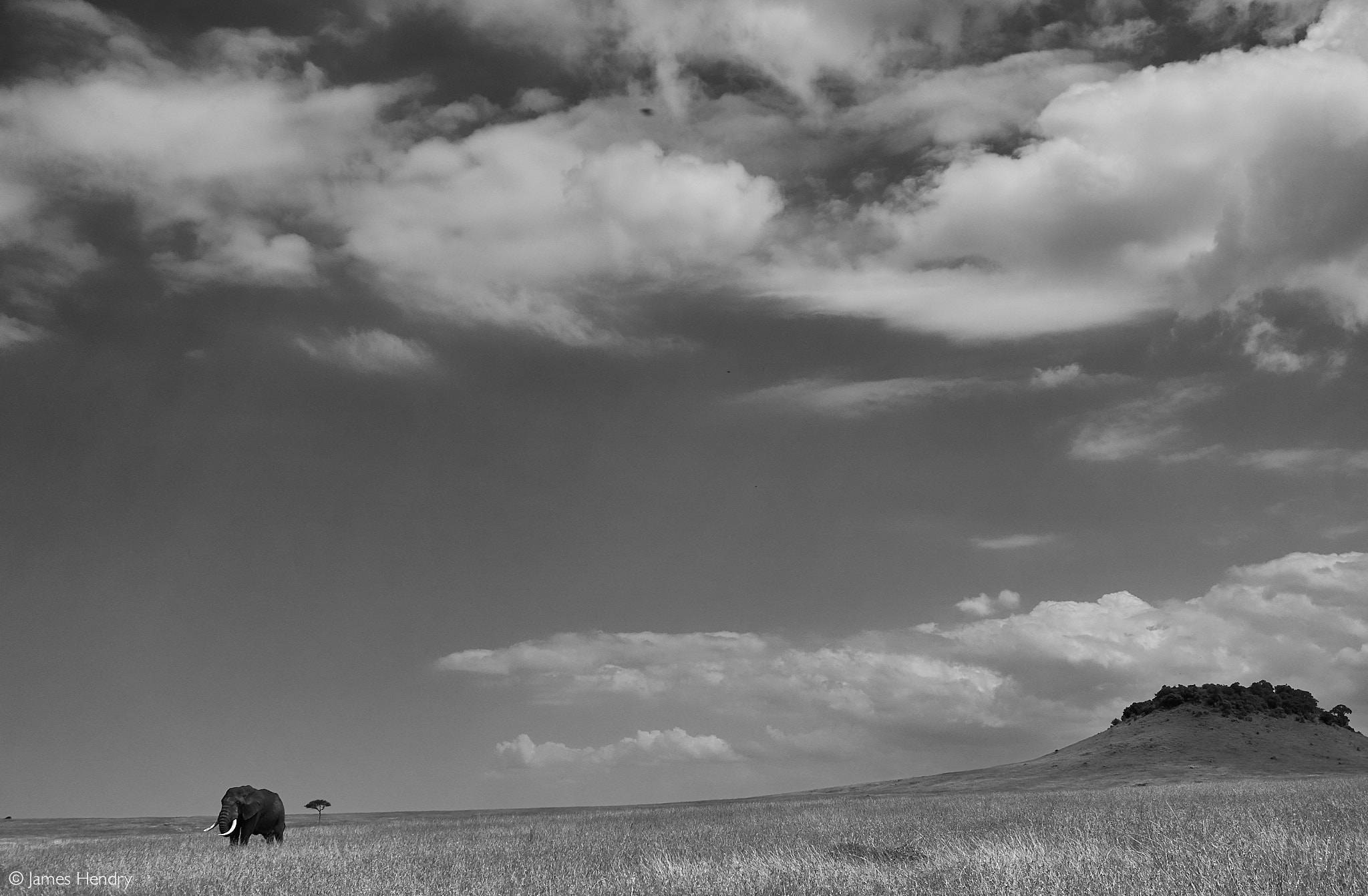
Acknowledgements
My gratitude to Rudi van Aarde (Emeritus Professor, University of Pretoria), Bruce Clegg (Resident Ecologist Malilingwe Trust) for answering my questions and SANParks for information on elephant numbers.
[1] Elephant population growth in Kruger National Park, South Africa, under a landscape management approach
[2] Van Aarde J. 2013. Elephants, a way forward.
[3] Jacobs Bonnie F. 2004. Palaeobotanical studies from tropical Africa: relevance to the evolution of forest, woodland and savannah biomesPhil. Trans. R. Soc. Lond. B3591573–1583.
[4] For further reading, see: Carruthers J. The Kruger National Park, a social and political history. University of Natal Press. 1995
[5]Elephant range is just a fraction of its potential
[7] Stevens N, Erasmus BF, Archibald S, Bond WJ. Woody encroachment over 70 years in South African savannahs: overgrazing, global change or extinction aftershock?. Philos Trans R Soc Lond B Biol Sci. 2016;371(1703):20150437
[8] WHYTE, I.J. (2001). Headaches and Heartaches – the elephant management dilemma. In: Environmental Ethics: Introductory readings. Eds. Schmidtz, D & Willot, E. pp293-305. New York: Oxford University Press.
[9] Elephant Carrying Capacity Is An Antiquated Concept
[10] The Kruger experience, ecology and management of savanna heterogeneity
[11] Zenda, C. 2021. Anxiety and anger as Zimbabwe mulls elephant culls. Fairplanet.org
[12] DuToit, J. Rogers, K. 2003. The Kruger Experience Ecology and Management of Savanna Heterogeneity. Island Press.
[13] Ferreira, S.Elephant population growth in Kruger National Park, South Africa, under a landscape management approach. Koedoe : African Protected Area Conservation and ScienceVol. 59, No. 1
[14] Decoding Kruger’s ‘Elephant Management Plan’
To comment on this story: Login (or sign up) to our app here - it's a troll-free safe place 🙂.![]()







